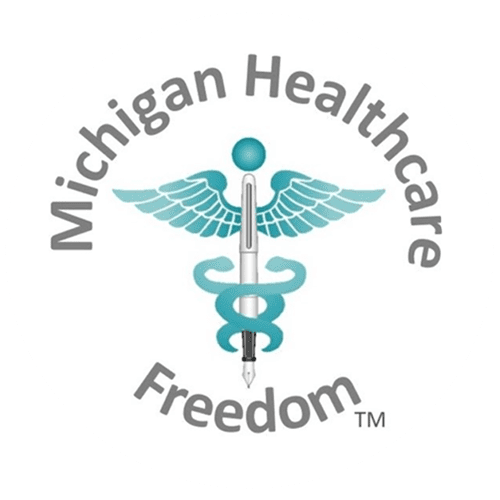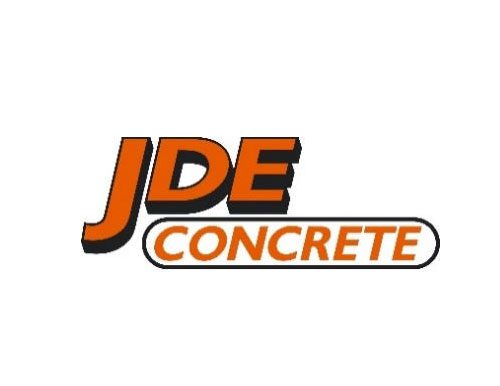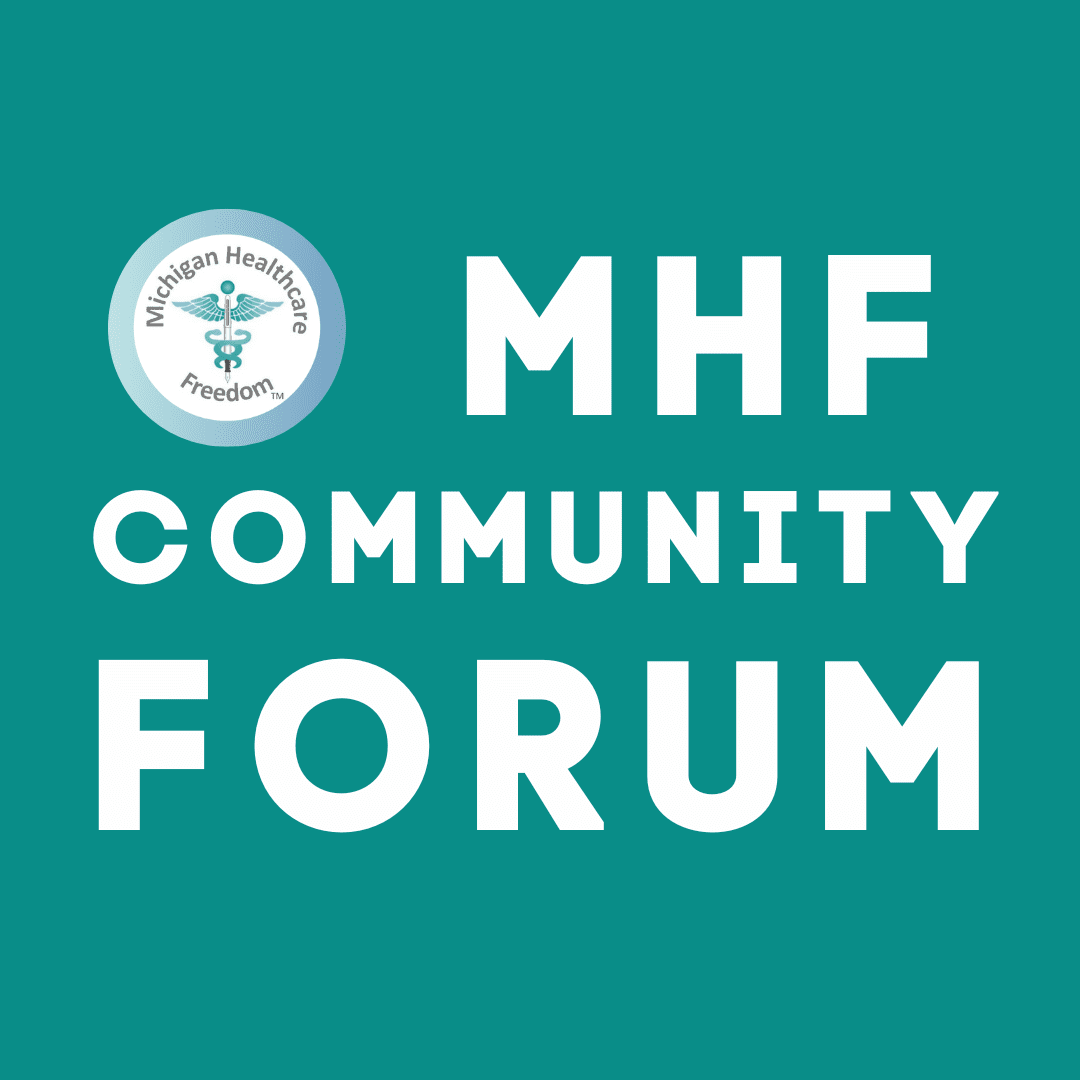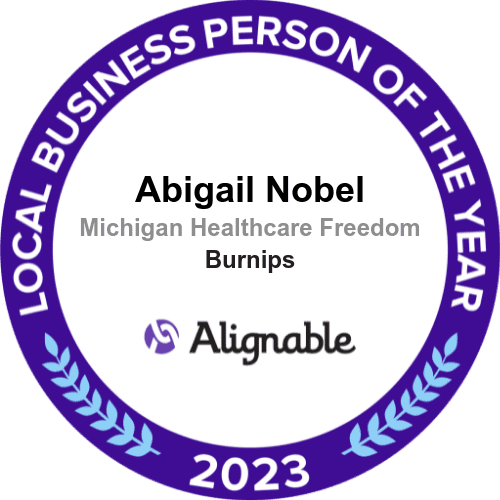
The National Institute of Standards and Technology (NIST), an agency of the U.S. Department of Commerce, has requested public comments on a set of draft guidelines which will invoke the University and Small Business Patent Procedures Act of 1980 based on the prices of pharmaceuticals alone. The University and Small Business Patent Procedures Act of 1980 (commonly known as the Bayh-Dole Act) grants the government the authority to suspend the patents of products of inventions that were developed with federal funding if those products or inventions are not made available to the public.
The authors of the Bayh-Dole Act, the late senators Birch Bayh (D-Ind.) and Robert Dole (R-Kan.), publicly stated that the law they developed did not intend for the government to be able to set prices on products.
"The law makes no reference to a reasonable price that should be dictated by the government," the pair wrote in an op-ed in The Washington Post. "This omission was intentional; the primary purpose of the act was to entice the private sector to seek public-private research collaboration rather than focusing on its own proprietary research."
The seizure of patent rights under Bayh-Dole is called "March In Rights" a discussion of those rights by the Congressional Research Service:
https://crsreports.congress.gov/product/pdf/R/R44597
The NIST "Request for Information Regarding the Draft Interagency Guidance Framework for Considering the Exercise of March-In Rights":
Request for Information Regarding the Draft Interagency Guidance Framework for Considering the Exercise of March-In Rights
OK, crazy question.
Could they not incorporate the same language into all future grants, to achieve virtually the same results?
Sure, it fails to reach back in time to everyone sitting on a patent. But it would avoid the minor constitutional matter of ex post facto rulemaking.
I see two opposing principles here.
- Patents mark private property. Constitutionally, people are free to do as they choose with their private property - even lock it up and decline to use it.
NIST sets standards and boundaries, about which God says, "Remove not the ancient landmark, which thy fathers have set." (Proverbs 22:28) - The kicker is that these patented products were developed by public universities, using public funds. They are not private property in the common understanding of the word. Certainly, the authors of the original Act did not intend these products to be treated as ordinary private property. ("the primary purpose of the act was to entice the private sector to seek public-private research collaboration rather than focusing on its own proprietary research.")
Nevertheless, having obtained a patent, these universities expect private property patent rights.
What is the best solution? Patents are clearly a constitutional role of government.
However, funding research is not.
Selective price-setting would insert government further into private affairs.
Instead, why not return to solid constitutional ground?
First, ban patents for end-products of public-private research collaboration/funding. Call it fruit of the poison tree: anything funded by public entities fails the private property test.
Without the patent incentive, university researchers will likely redirect their grant-seeking to private funding sources.
Unlike Bayh and Dole, I don't see "proprietary" as a bad thing. It's just another term for private property.
The ultimate goal should be to end public-private research collaboration/funding. NOT the sanctity of patents.
Federal health funding details, by way of a press release from my Congressman.
https://huizenga.house.gov/news/documentsingle.aspx?DocumentID=402742
Huizenga Introduces GRANT Act to Increase Transparency, Accountability at NIH
Washington, November 29, 2023Today, Congressman Bill Huizenga (R-MI) announced the introduction of the Grant Reform and NIH Transparency (GRANT) Act. The GRANT Act requires the National Institutes of Health (NIH) to establish and maintain a Database of Denials for each research proposal that is denied a grant or other award
Nearly 83% of NIH’s $48 billion budget goes to fund research through its grant program. This is the same NIH program that provided funding for the EcoHealth Alliance to partner with the Wuhan Institute of Virology in China to study bat coronaviruses.
Additionally, the GRANT Act requires the creation of a mechanism to share NIH’s internal grant-making information with independent, outside researchers to increase transparency and hold bureaucrats accountable for their decision-making.
“This legislation will increase transparency and bring much needed light to the National Institutes of Health Grant Program,”said Congressman Bill Huizenga.“The GRANT Act will provide researchers as well as taxpayers the ability to see not only what research the National Institutes of Health is funding but also the rationale behind denying requests for funding.
“This reform driven legislation will also make the grant process at NIH more competitive resulting in a more efficient use of taxpayer dollars. Institutions should continue to innovate and compete to earn federal grants. Americans deserve to have their taxpayer dollars used to develop the most impactful and cutting-edge advancements possible. The GRANT Act will restore oversight, foster innovation, and increase accountability at NIH.”
“As the very first watchdog organization to expose how U.S. taxpayers funded the Wuhan lab, we applaud and endorse Congressman Huizenga’s common-sense GRANT Act,”said Anthony Bellotti, President and Founder of the White Coat Waste Project. “For too long, the National Institutes of Health has lacked transparency, accountability, and oversight. NIH’s wasteful spending on gain-of-function bat and animal tests almost certainly caused COVID-19. Taxpayers have a right to know who’s paying the bills…and who’s cashing the checks. Now, thanks to Congressman Huizenga’s new GRANT Act, we’re one step closer to exactly that.”
The legislative text of the GRANT Act is available here.
Hillsdale College's latest Imprimis features Sen. Rand Paul, who comments on creative ways to limit federal healthcare research funding.
I excerpt the most relevant portion here due to length of the full article, Lessons from the Great COVID Cover-Up.
https://imprimis.hillsdale.edu/lessons-from-the-great-covid-cover-up/
In December 2022, Congress passed a 4,155-page spending bill. It had a price tag of $1.7 trillion, including over a trillion dollars that had to be borrowed. It was appropriately called an “omni,” since everything but the kitchen sink was thrown in. On page 3,354, the Secretary of Health and Human Services was directed “not [to] fund research conducted by a foreign entity at a facility located in a country of concern . . . involving pathogens of pandemic potential or biological agents or toxins.”
This was a welcome attempt to stop the funding of dangerous research around the world, but Americans and their representatives must watch carefully to see whether our public health agencies attempt to sidestep it. The recent behavior of NIAID and NIH bureaucrats, as exemplified by their attempts to deceive Congress and the American people during the Covid pandemic, does not instill confidence.
A group of 34 prominent scientists recently presented a series of reforms to “strengthen the US government’s enhanced potential pandemic pathogen framework.” This Gain-of-Function Reform Group (GoF Group) recommended that gain-of-function experiments that confer “efficient human transmissibility” on a pathogen should be regulated. Adopting this standard would explicitly stop bureaucrats like Fauci from dancing around the gain-of-function definition and looking the other way as researchers create viruses that spread more easily in humans.
Current regulations allow gain-of-function research to occur if the research is said to be concerned with “developing and producing” vaccines. However, dangerous research should not be permitted or funded on the basis of a potential product. Rather, we should ban clearly dangerous research and highly scrutinize anything else that “could enhance the virulence or transmissibility of any pathogen,” as the GoF Group recommends.
We should treat this research as we do nuclear weapons—as the potential threat to human life is even greater. Ideally, as Rutgers University molecular biologist Richard Ebright recommends, “responsibility for US oversight of gain-of-function research of concern should be assigned to a single, independent federal agency that does not perform research and does not fund research. The oversight of research on fissionable materials by the Nuclear Regulatory Commission provides a precedent and a model.”
Another pervasive problem is conflict of interest. Under our current lax guidelines, researchers can essentially approve their own grants if they toe the official bureaucratic line. Consider the particularly egregious example of Kristian Andersen receiving a million-dollar grant mere months after abruptly switching his scientific opinion on Covid’s origin from a likely lab leak to “natural spillover.” We have always known that recipients of federal dollars might try to game the system. Conflict of interest regulations are littered throughout the federal code. One would think recusal for a conflict of interest would be the standard fallback procedure for all federal science funding. Yet when I questioned Fauci about whether any of the scientists on the vaccine-approval boards also received royalties from the drug companies that make vaccines, he responded that he did not have to inform Congress about royalty payments. In addition to the fact that he was the highest paid employee of the federal government, his own net worth is estimated to have doubled to more than $12.5 million during the pandemic. This is an insult to the American taxpayer and the American ideal. We should not allow this kind of obvious corruption.
The GoF Group calls for regulators to “recuse any individual whose agency is funding or participating in the proposed [gain-of-function research] from decision making in the [pandemic] review process.” Reviewers “should be subject to conflict of interest rules.” They also recommended including “representatives of civil society” in the review of potential pandemic pathogens.
For several years, I have proposed something similar for all grants funded by the federal government. Even before I became aware of the extent of Fauci’s abusive reign, I introduced the BASIC Research Act, which would add at least one scientist to each funding committee from a major field of research that has unanimity of support, such as heart disease, diabetes, cancer, and Alzheimer’s. The goal is to create more debate on the best use of limited government research funds. I would also add a taxpayer advocate to all funding committees. Perhaps then we would start to question absurd “scientific” research grants, such as the $2.3 million the NIH spent injecting beagle puppies with cocaine, or the $3 million NIH grant to put hamsters on steroids and watch them fight.
In addition, my legislation would prohibit grant applicants from requesting their own friends for funding review. We should also make all federal grant applications public.
To prevent what happened during the Covid pandemic from happening again, Congress must address the concentration of power over long periods of time in the hands of unelected and unaccountable bureaucrats. In particular, it should divide the power of the NIAID into three separate institutes overseeing allergic diseases, infectious diseases, and immunologic diseases. Each institute should be led by a director who is appointed by the president and confirmed by the Senate for a limited term of five years.
Anthony Fauci—who wielded tremendous power over many decades—funded dangerous research, lied to Congress and the American people, flip-flopped on many of his prognostications, issued edicts that defied science, and attacked and smeared his scientific critics. His reprehensible behavior reminded me of nothing so much as C.S. Lewis’s description of the moral busybody: “Of all tyrannies, a tyranny sincerely exercised for the good of its victims may be the most oppressive. . . . [T]hose who torment us for our own good will torment us without end for they do so with the approval of their own conscience.”
We the American people must not allow bureaucratic “experts” to endanger our lives, lie to us, or curtail our constitutional rights. Never again.







This document has a comment period that ends in 57 days. (02/06/2024)
AGENCY:
National Institute of Standards and Technology, Department of Commerce.
ACTION:
Notice; Request for Information (RFI).
SUMMARY:
The National Institute of Standards and Technology (NIST) seeks comments on the Draft Interagency Guidance Framework for Considering the Exercise of March-In Rights, which reviews the factors that an agency may consider when deciding whether to exercise march-in rights. NIST requests information from the public on the proposed version of this guidance document to ensure that it is clear, and its application will both fulfill the purpose of march-in rights and uphold the policy and objectives of the Bayh-Dole Act. The information received in response to this RFI will inform NIST and the Interagency Working Group for Bayh-Dole (IAWGBD) in developing a final framework document that may be used by an agency when making a march-in decision. NIST will hold at least one informational webinar explaining the Draft Interagency Guidance Framework for Considering the Exercise of March-In Rights and how the public can submit comments. Details about the informational webinar(s), including dates, times and any registration requirements, will be announced at https://www.nist.gov/tpo/policy-coordination/bayh-dole-act .
DATES:
Comments must be received by 5 p.m. Eastern time on February 6, 2024 to be considered. Written comments in response to the RFI should be submitted according to the instructions below. Submissions received after that date may not be considered.
ADDRESSES:
Comments may be submitted by electronic submission via the Federal eRulemaking Portal.
1. Go to www.regulations.gov and enter NIST–2023–0008 in the search field.
2. Click the “Comment Now!” icon, complete the required fields.
3. Enter or attach your comments.
Please submit comments only and include your name and/or your organization's name (if any) in your submission. Comments containing references, studies, research, and other empirical data that are not widely published should include copies of the referenced materials.
All submissions, including attachments and other supporting materials, will be a matter of public record. Relevant comments will generally be available on the Federal eRulemaking Portal at https://www.Regulations.gov . NIST will not accept comments accompanied by a request that part or all of the material be treated confidentially because of its business proprietary nature or for any other reason. Therefore, do not submit confidential business information or otherwise sensitive, protected, or personal information, such as account numbers, Social Security numbers, or names of other individuals.
FOR FURTHER INFORMATION CONTACT:
Mojdeh Bahar, Associate Director for Innovation and Industry Services, National Institute of Standards and Technology, 100 Bureau Drive, Gaithersburg, MD 20899, (301) 975–2340 or by email to mojdeh.bahar@nist.gov.
SUPPLEMENTARY INFORMATION:
I. Background
The Federal Government invests approximately $115B each year in extramural research and development at universities, non-profits, and small and large businesses.[1] This results in the creation of thousands of inventions annually. The University and Small Business Patent Procedures Act of 1980, Public Law 96–517 (as amended), codified at title 35 of the United States Code (U.S.C.) 200 et seq., commonly known as the “Bayh-Dole Act” or “Bayh-Dole,” governs these inventions made with Federal assistance. The Bayh-Dole Act outlines the rights of persons, nonprofit organizations, and small business firms (“contractors”), and, as set forth in Executive Order 12591, all contractors regardless of size and to the extent permitted by law, in “any invention of the contractor conceived or first actually reduced to practice in the performance of work under a funding agreement” (“subject invention”) as well as rights retained by the government. One such right is the funding agency's right to require the contractor, an assignee, or exclusive licensee of a subject invention to grant a license to a responsible applicant or applicants, upon terms that are reasonable under the circumstances, and if the contractor, assignee, or exclusive licensee refuses such request, to grant a license itself (35 U.S.C. 203). This right, referred to as “march-in,” can only be exercised if the agency determines that:
(1) action is necessary because the contractor or assignee has not taken, or is not expected to take within a reasonable time, effective steps to achieve practical application of the subject invention in such field of use;
(2) action is necessary to alleviate health or safety needs which are not reasonably satisfied by the contractor, assignee, or their licensees;
(3) action is necessary to meet requirements for public use specified by Federal regulations and such requirements are not reasonably satisfied by the contractor, assignee, or licensees; or
(4) action is necessary because the agreement required by section 204 has not been obtained or waived or because a licensee of the exclusive right to use or sell any subject invention in the United States is in breach of its agreement obtained pursuant to section 204.
NIST has been delegated responsibility by the Secretary of Commerce to promulgate regulations concerning the management and licensing of federally funded inventions. On January 4, 2021, NIST published a notice of proposed rulemaking (NPRM) in the Federal Register (86 FR 35) [2] requesting public comments on several proposed changes to the Bayh-Dole regulations at 37 CFR parts 401 and 404, including a provision related to march-in rights which stated that march-in “shall not be exercised exclusively based on the business decisions of the contractor regarding the pricing of commercial goods and services arising from the practical application of the invention.” In connection with that provision and other proposed changes, NIST received over 81,000 public comments and was directed through Executive Order 14036 to consider not finalizing the provision on march-in rights and product pricing in the proposed rule. In the Final Rule published in the Federal Register (88 FR 17730) [3] on March 24, 2023, NIST did not finalize this provision but stated its intent to engage with stakeholders and agencies with the goal of developing a comprehensive framework for agencies considering the use of march-in.
NIST has been working with the IAWGBD which regularly meets to find agency consensus on policy and procedures related to the implementation of the Bayh-Dole regulations, to draft this framework. The objectives for the Draft Interagency March-In Guidance Framework are to:
II. Request for Information
NIST publishes this notice to seek comments on the Draft Interagency Guidance Framework for Considering the Exercise of March-in Rights, included with this RFI as Appendix A.
All responses that comply with the requirements listed in the DATES and ADDRESSES sections of this RFI will be considered.
The following list of topics covers the major areas about which NIST seeks information. The listed areas are not intended to limit the topics that may be addressed by respondents so long as they address the proposed march-in framework, including, but not limited to, sections or questions that are confusing or need additional context or explanation; additional sub-questions that would assist an agency in answering the major questions outlined in the framework; specific challenges posed by the framework as written; and other recommended improvements. Responses may include any topic believed to have implications for decision making related to march-in, regardless of whether the topic is included in this document.
NIST is specifically interested in receiving input from the public pertaining to the following questions:
(1) After reading through the framework and example scenarios, if needed, how could the guidance about when an agency might want to exercise march-in and the factors that an agency might consider be made clearer?
(2) The framework contains many terms which have specific meanings under Bayh-Dole or in technology development and commercialization. Are the definitions provided at the beginning of the framework easy to understand? Do they aid in your ability to interpret the framework?
(3) How could the framework be improved to be easier to follow and comprehend?
(4) Does this framework sufficiently address concerns about public utilization of products developed from subject inventions, taking into account the fact that encouraging development and commercialization is a central objective of the Bayh-Dole Act?
(5) The framework is not meant to apply to just one type of technology or product or to subject inventions at a specific stage of development. Does the framework ask questions and capture scenarios applicable across all technology sectors and different stages of development? How could any gaps in technology sectors or stages of development be better addressed?
Authority:35 U.S.C. 203, 206; DOO 30–2A.
Alicia Chambers,
NIST Executive Secretariat.
Appendix A
Draft Interagency Guidance Framework for Considering the Exercise of March-In Rights
Table of Contents
Definitions
Introduction to March-in Rights & Framework
Does Bayh-Dole Apply?
Ownership and Licensing
Is a Statutory Criterion Met?
Would March-In Support the Policy & Objective of Bayh-Dole, Considering The Specific Case And Broader Context?
Scenarios & Examples
The full NIST request is too long to republish here. Go to the hyperlink, above, to read its full text.